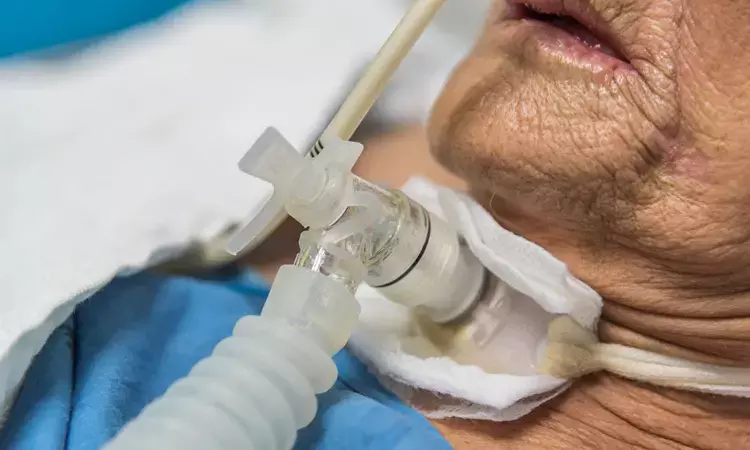- Home
- Medical news & Guidelines
- Anesthesiology
- Cardiology and CTVS
- Critical Care
- Dentistry
- Dermatology
- Diabetes and Endocrinology
- ENT
- Gastroenterology
- Medicine
- Nephrology
- Neurology
- Obstretics-Gynaecology
- Oncology
- Ophthalmology
- Orthopaedics
- Pediatrics-Neonatology
- Psychiatry
- Pulmonology
- Radiology
- Surgery
- Urology
- Laboratory Medicine
- Diet
- Nursing
- Paramedical
- Physiotherapy
- Health news
- Fact Check
- Bone Health Fact Check
- Brain Health Fact Check
- Cancer Related Fact Check
- Child Care Fact Check
- Dental and oral health fact check
- Diabetes and metabolic health fact check
- Diet and Nutrition Fact Check
- Eye and ENT Care Fact Check
- Fitness fact check
- Gut health fact check
- Heart health fact check
- Kidney health fact check
- Medical education fact check
- Men's health fact check
- Respiratory fact check
- Skin and hair care fact check
- Vaccine and Immunization fact check
- Women's health fact check
- AYUSH
- State News
- Andaman and Nicobar Islands
- Andhra Pradesh
- Arunachal Pradesh
- Assam
- Bihar
- Chandigarh
- Chattisgarh
- Dadra and Nagar Haveli
- Daman and Diu
- Delhi
- Goa
- Gujarat
- Haryana
- Himachal Pradesh
- Jammu & Kashmir
- Jharkhand
- Karnataka
- Kerala
- Ladakh
- Lakshadweep
- Madhya Pradesh
- Maharashtra
- Manipur
- Meghalaya
- Mizoram
- Nagaland
- Odisha
- Puducherry
- Punjab
- Rajasthan
- Sikkim
- Tamil Nadu
- Telangana
- Tripura
- Uttar Pradesh
- Uttrakhand
- West Bengal
- Medical Education
- Industry
Early Intervention in Laryngeal Injury After Intubation reduces risk of tracheostomy,JAMA

A recently published study reports in JAMA Otolaryngol Head Neck Surg suggests that early intervention for patients with postintubation laryngeal injury was associated with a decreased duration of tracheostomy dependence, a higher rate of decannulation, and fewer surgical procedures compared with late intervention. Patients who underwent early intervention also avoided open reconstruction, wrote the research team.
Patients with laryngeal injury after endotracheal intubation often present long after initial injury with mature fibrosis compromising cricoarytenoid joint mobility and glottic function.
With this in mind, researchers undertook a study to compare functional outcomes between early and late intervention for intubation-related laryngeal injury.
As for the study design,this retrospective cohort study involved 29 patients with laryngeal injury resulting from endotracheal intubation who were evaluated at a tertiary care center between May 1, 2014, and June 1, 2018. Ten patients with intubation injury to the posterior glottis who received early treatment (median, 34.7 days to presentation; interquartile range [IQR], 1.5-44.8 days) were compared with 19 patients presenting with posterior glottic stenosis who received late treatment (median, 341.9 days to presentation; IQR, 132.7-376.3 days). Statistical analysis was performed from May 1 to July 1, 2019.
Early intervention, defined as a procedure performed 45 days or less after intubation, and late treatment, defined as an intervention performed greater than 45 days after intubation.
Patient-specific and intervention-specific covariates were compared between the 2 groups, absolute differences with 95% CIs were calculated, and time to tracheostomy decannulation was compared using log-rank testing.
Results revealed some interesting facts.
- The 2 groups had similar demographic characteristics and a similar burden of comorbid disease. Ten patients who received early intervention (7 women [70%]; median age, 59.7 years [range, 31-72 years]; median, 34.7 days to presentation [IQR, 1.5-44.8 days]) were compared with 19 patients who received late intervention (11 women [58%]; median age, 53.8 years [range, 34-73 years]; median, 288.8 days to presentation [IQR, 132.7-376.3 days]).
- Nine of 10 patients (90%) who received early intervention and 11 of 19 patients (58%) who received late interventions were decannulated at last follow-up (absolute difference, 32%; 95% CI, −3% to 68%).
- Patients who received early treatment required fewer total interventions than patients with mature lesions (mean, 2.2 vs 11.5; absolute difference, 9.3; 95% CI, 6.4-12.1).
- In addition, none of the patients who received early treatment required an open procedure, whereas 17 patients (90%) with mature lesions required open procedures to pursue decannulation.
" These findings may bear relevance to the management of patients requiring extended durations of endotracheal intubation during recovery for critical illness related to severe acute respiratory syndrome coronavirus 2 (SARS-CoV-2) infection."wrote the team.
For full article follow the link: 10.1001/jamaoto.2020.451
Primary source: JAMA Otolaryngology
Dr Satabdi Saha (BDS, MDS) is a practicing pediatric dentist with a keen interest in new medical researches and updates. She has completed her BDS from North Bengal Dental College ,Darjeeling. Then she went on to secure an ALL INDIA NEET PG rank and completed her MDS from the first dental college in the country – Dr R. Ahmed Dental College and Hospital. She is currently attached to The Marwari Relief Society Hospital as a consultant along with private practice of 2 years. She has published scientific papers in national and international journals. Her strong passion of sharing knowledge with the medical fraternity has motivated her to be a part of Medical Dialogues.
Dr Kamal Kant Kohli-MBBS, DTCD- a chest specialist with more than 30 years of practice and a flair for writing clinical articles, Dr Kamal Kant Kohli joined Medical Dialogues as a Chief Editor of Medical News. Besides writing articles, as an editor, he proofreads and verifies all the medical content published on Medical Dialogues including those coming from journals, studies,medical conferences,guidelines etc. Email: drkohli@medicaldialogues.in. Contact no. 011-43720751


